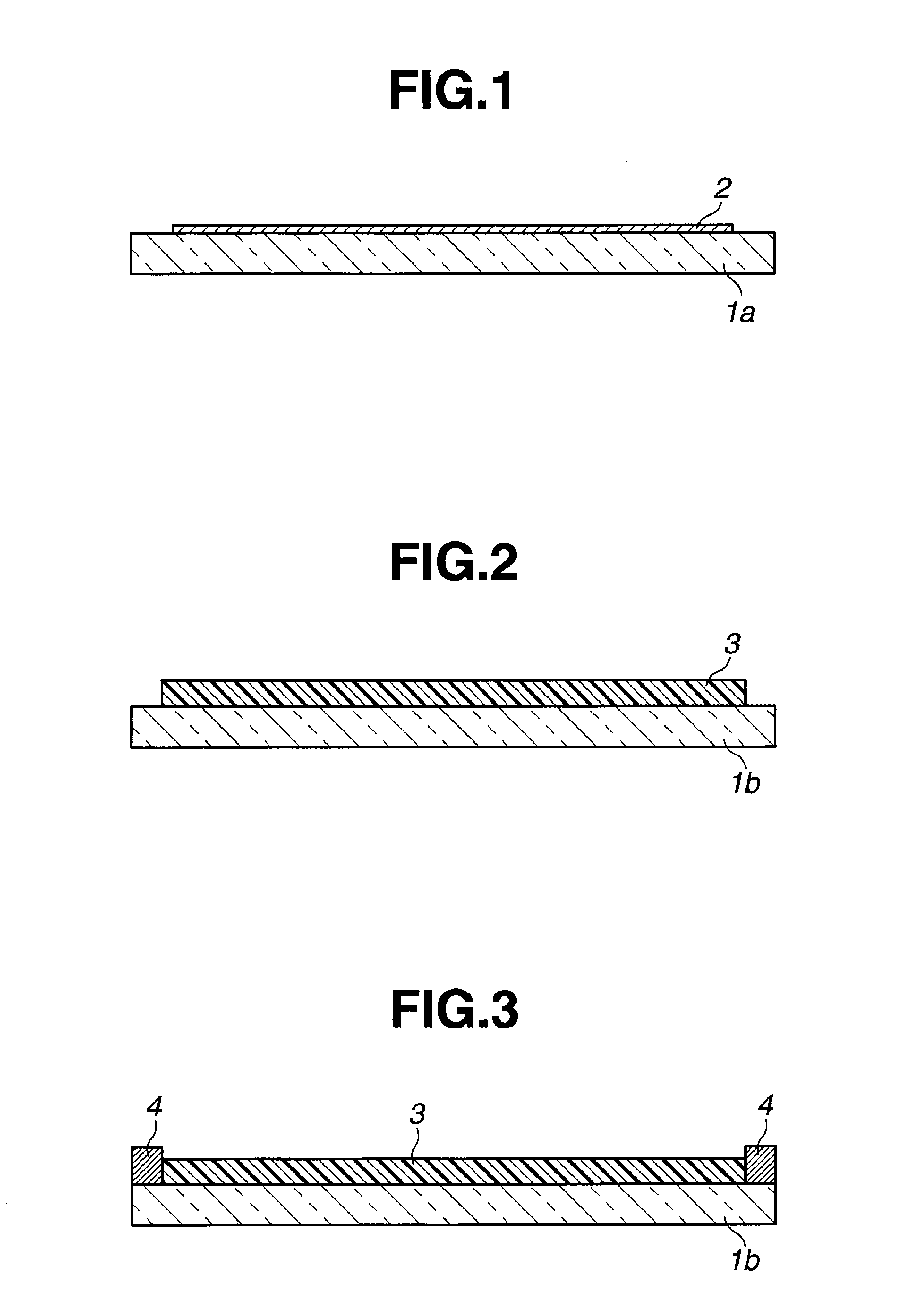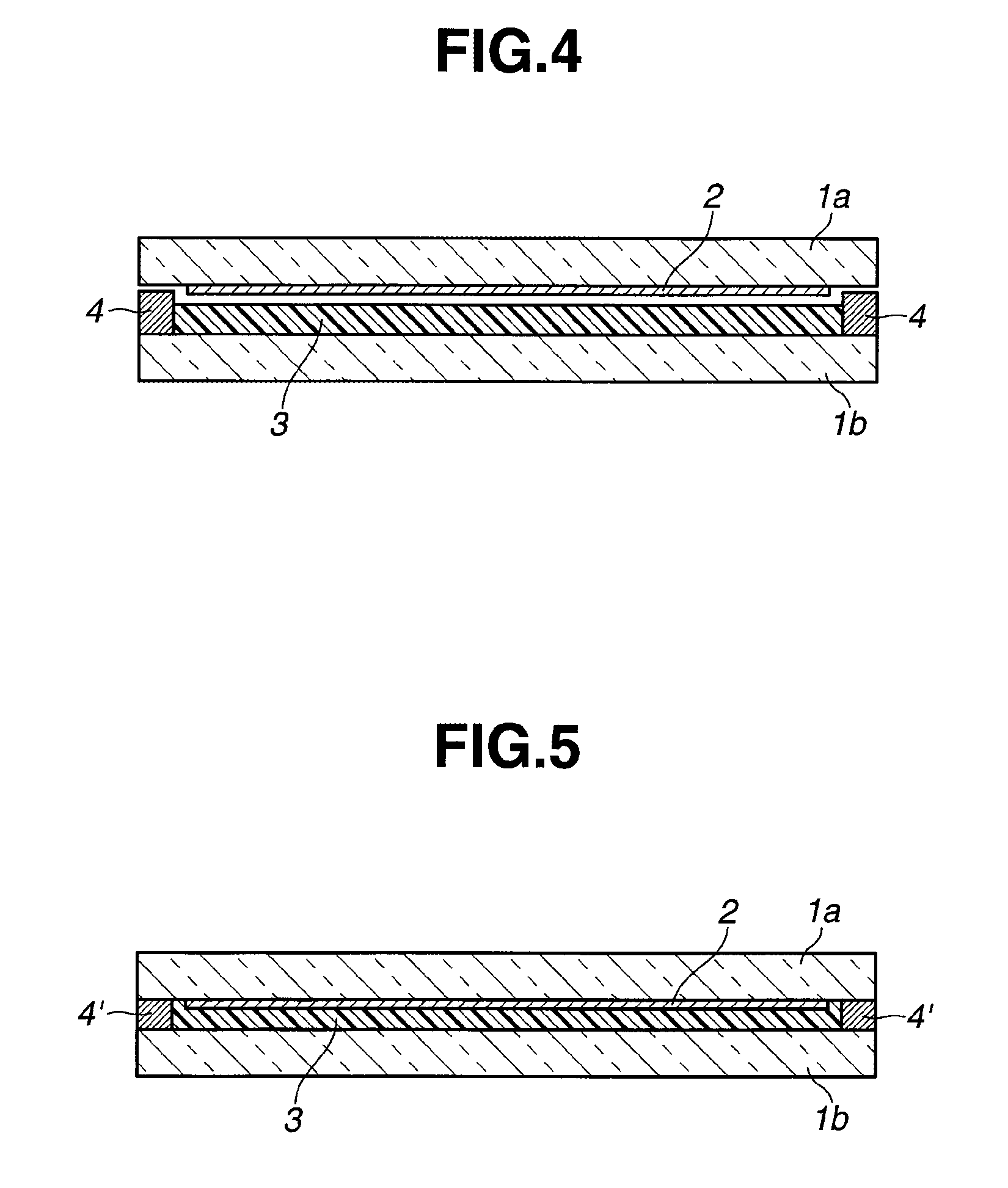Solar cell module and making method
- Summary
- Abstract
- Description
- Claims
- Application Information
AI Technical Summary
Benefits of technology
Problems solved by technology
Method used
Image
Examples
first embodiment
[0062]A first embodiment of the invention is a solar cell module comprising a first substrate having a surface, a thin-film solar cell comprising a metal electrode layer, a photoelectric conversion layer, and a light-transmissive electrode layer disposed on the surface of the first substrate in the described order, a transparent second substrate disposed above the surface of the first substrate, a light-transmissive silicone gel layer interposed between the first and second substrates so as to overlap the thin-film solar cell, and a seal portion comprising a water vapor non-permeable, rubber-based thermoplastic sealing material surrounding and sealing the outer periphery of the silicone gel layer.
[0063]A method for manufacturing the solar cell module of the first embodiment is defined as comprising the steps of:
[0064](i) stacking a metal electrode layer, a photoelectric conversion layer, and a light-transmissive electrode layer on one surface of a first substrate, excluding a periph...
second embodiment
[0130]A second embodiment of the invention is a solar cell module comprising a transparent first substrate (panel 1a) having a surface, a thin-film solar cell (thin-film solar cell 2) comprising a light-transmissive electrode layer, a photoelectric conversion layer, and a metal electrode layer disposed on the surface of the first substrate in the described order, a second substrate (panel 1b) disposed above the surface of the first substrate, a silicone gel layer (silicone gel layer 3) interposed between the first and second substrates so as to overlap the thin-film solar cell, and a seal portion (seal portion 4′) comprising a water vapor non-permeable, rubber-based thermoplastic sealing material surrounding and sealing the outer periphery of the silicone gel layer.
[0131]The second embodiment differs from the first embodiment in that panel 1a is a transparent substrate (that is, identical with panel 1b in the first embodiment), that the layer structure of the thin-film solar cell 2 ...
example 1
[0144]There was furnished a first substrate or soda-lime glass plate of 1.8 mm thick and 22 cm squares. After a peripheral region of the first substrate was masked with a metal mask, constituent layers of a thin-film solar cell were deposited only on the inside region of 21 cm squares of the first substrate. Specifically, the first substrate was cleaned and the mask was laid on its surface. By the DC magnetron sputtering method, a Mo electrode film was deposited to a thickness of 0.8 μm. Then a CIGS layer of 2 μm thick was deposited by the three-stage evaporation method, a CdS buffer layer of 50 to 100 nm thick was deposited by the solution growth method, and a ZnO semi-insulating layer and an Al-doped ZnO transparent electrode layer were deposited by the sputtering method to a total thickness of 0.7 μm. Further, a MgF2 film of 120 nm thick was deposited by the vacuum evaporation method as antireflective film. An Al / Ni layer was formed by the vacuum evaporation method and processed ...
PUM
 Login to View More
Login to View More Abstract
Description
Claims
Application Information
 Login to View More
Login to View More - R&D
- Intellectual Property
- Life Sciences
- Materials
- Tech Scout
- Unparalleled Data Quality
- Higher Quality Content
- 60% Fewer Hallucinations
Browse by: Latest US Patents, China's latest patents, Technical Efficacy Thesaurus, Application Domain, Technology Topic, Popular Technical Reports.
© 2025 PatSnap. All rights reserved.Legal|Privacy policy|Modern Slavery Act Transparency Statement|Sitemap|About US| Contact US: help@patsnap.com



